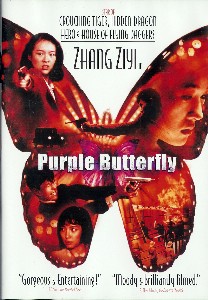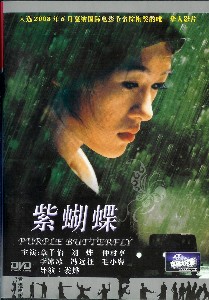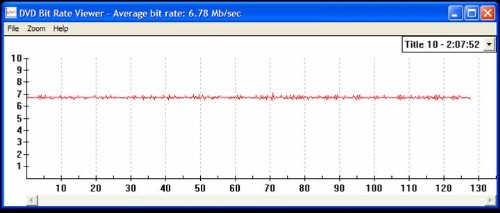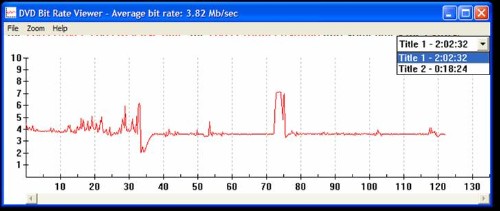![]()
![]()

![]()
![]()
|
Search DVDBeaver |
S E A R C H D V D B e a v e r |
(aka "Zi Hudie" )
directed by Lou Ye
China 2003
|
Most non-Chinese people know Zhang Ziyi
from her appearances in the martial-arts movies “Crouching
Tiger, Hidden Dragon”, “Hero”,
and “House
of Flying Daggers”. However, Zhang Ziyi is not just an action
star. In fact, she doesn’t know any martial arts; she relies on her
training as a ballet dancer in order to perform martial-arts
choreography. Zhang Ziyi has also appeared in serious dramatic pieces
such as “The
Road Home” and “Purple Butterfly”. Although she appeared
in “Rush Hour 2”, Zhang’s first lead role in an English-language
production was in “Memoirs
of a Geisha”. David McCoy |
Posters
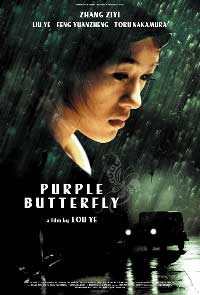 |
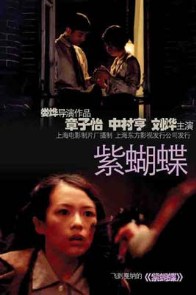 |
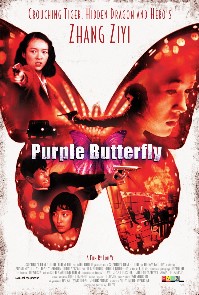 |
Theatrical Release: 22 May 2003 (Cannes Film Festival)
Reviews More Reviews DVD Reviews
DVD Comparison:
Palm Pictures - Region 1 - NTSC vs. Zoke Culture - Region 0 - PAL
Big thanks to David McCoy for all the Screen Caps!
(Palm Pictures - Region 1 - NTSC - LEFT vs. Zoke Culture - Region 0 - PAL - RIGHT)
| DVD Box Covers |
|
|
| Distribution |
Palm Pictures Region 1 - NTSC |
Zoke Culture Region 0 - PAL |
| Runtime | 127 min | 122 min (4% PAL speedup) |
| Video |
1.85:1 Original Aspect Ratio
16X9 enhanced |
1.66:1 Aspect Ratio |
|
NOTE: The Vertical axis represents the bits transferred per second. The Horizontal is the time in minutes. |
||
|
Bitrate:
Palm Pictures
|
|
|
|
Bitrate:
Zoke Culture
|
|
|
| Audio | Dolby Digital 2.0 stereo Mandarin Chinese, Dolby Digital 5.1 Mandarin Chinese |
Dolby Digital 2.0 surround Mandarin Chinese |
| Subtitles | Optional English | Burned-in Simplified Chinese |
| Features |
Release Information: Studio: Palm Pictures Aspect Ratio:
Edition Details: Chapters 18 |
Release Information: Studio: Zoke Culture Aspect Ratio:
Edition Details:
DVD Release Date: 28 Jul 2003 Chapters 6 |
| Comments |
Video: R1 Palm The 1.85:1 anamorphic widescreen image is pretty lousy. It is mis-framed, as can be seen with captions and subtitles at the bottom of the screen being partially cut off. The contrast is all wrong, and since the print was brightened in the wrong manner, there are hardly any true blacks. Moreover, improper brightening leads to excessive grain. You can see print damage (such as vertical scratches created by cameras, film processors, and projectors). There are “cigarette burns” in the upper right-hand corner (used to indicate reel changes in theatres), which means that the print used for the DVD was a dupe of a dupe that was sent to theatres instead of a print taken directly from the master negative. Only a few clean, clear shots give you a glimpse of how this well-shot movie should look on DVD. This transfer was probably taken from an interlaced source, as evidenced by the “venetian blinds”. R0 Zoke The 1.66:1 non-anamorphic widescreen image is awful. In most places, it looks like a pirated recording made with a videocamera in a movie theatre. The picture is very dark, though fleshtones seem to be more natural than with the R1 Palm DVD. This transfer has more vertical footage than the R1 disc, though it has been cropped on the sides. It looks like the R0 PAL video was taken from a progressive source, but blocking and other video artifacts abound. Note: I’ve used the full 4x3 image of the R0 Zoke transfer to show you the weird masking that was used. The black bars are uneven lines, suggesting that “home-made” mattes were used to approximate letterboxing during shooting. Audio: R1 Palm I read other DVD reviews of “Purple Butterfly” before writing mine, and everyone praised the audio for being above-average. Those reviewers were basically lying. I watched my disc as well as three other copies of the R1 Palm DVD, and they all had the same problem. The Dolby Digital 5.1 Mandarin Chinese track is atrocious. Sometimes, the right front channel didn’t have anything, and sometimes, the left front channel didn’t have anything. The rears are weak or non-existent. Bass output is muted and inconsistent, and music reproduction is tepid. The dialogue was muffled. The 5.1 track was so aggravating that I switched to the DD 2.0 stereo Mandarin Chinese track, which was nicely-balanced, with robust bass and audible music coupled with credible rain effects (also weak in the 5.1 track) and comprehensible dialogue. Where was Quality Control??? R0 Zoke The DD 2.0 surround Mandarin Chinese track is similar to the DD 2.0 stereo track on the R1 DVD, though there is so much hiss and other ambient noises that it sounds like a recording taken inside an empty movie theatre. Extras: R1 Palm The DVD offers only a couple of previews, including one for “Purple Butterfly”, in terms of bonus features. The trailer for “Purple Butterfly” is also marred by technical problems, including a complete audio drop-out towards its end. In fact, the audio sounds wobbly for most of the trailer’s running time, leading me to believe that the trailer on the DVD was mastered from a print that made a few too many rounds in theatres before arriving in the DVD producer’s hands. There’s also a “Director’s Statement” printed on the reverse side of the keepcase cover art. R0 Zoke The DVD has about 18-minutes’ worth of trailers and promotional clips. This sampling of footage is of terrible quality, so the R0 Zoke wins this category through quantity rather than via quality. Summary: To be frank, both DVD versions of “Purple Butterfly” are terrible, but the movie is a richly rewarding experience. The R1 Palm disc is at least watchable, though be sure to pick the DD 2.0 stereo track instead of the badly-authored DD 5.1 track. - David McCoy |
DVD Menus
|
|
|
|
|
|
|
|
|
|
|
Screen Captures
(Palm Pictures - Region 1 - NTSC - TOP vs. Zoke Culture - Region 0 - PAL - BOTTOM)
|
|
|
|
(Palm Pictures - Region 1 - NTSC - TOP vs. Zoke Culture - Region 0 - PAL - BOTTOM)
|
|
|
|
(Palm Pictures - Region 1 - NTSC - TOP vs. Zoke Culture - Region 0 - PAL - BOTTOM)
|
|
|
|
(Palm Pictures - Region 1 - NTSC - TOP vs. Zoke Culture - Region 0 - PAL - BOTTOM)
|
|
|
|
(Palm Pictures - Region 1 - NTSC - TOP vs. Zoke Culture - Region 0 - PAL - BOTTOM)
|
|
|
|
Report Card:
|
Image: |
R1 Palm |
|
Sound: |
R1 Palm |
| Extras: | R0 Zoke |
| Menu: | R1 Palm |
![]()
![]()
![]()
![]()

